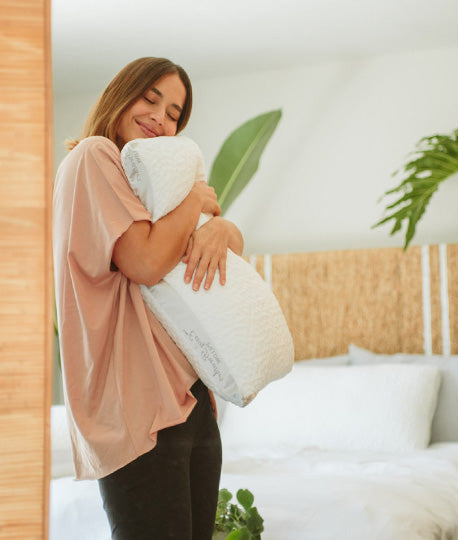When deciding on partnering with Bed In A Box brand, foam density and durability, as well as lack of toxic VOC's, was a big concern of mine. Here is what I learned about BIAB's foam:
How does the density of Bed In A Box's memory foam compare to others?
(Taken from a recent e-mail to BedinaBox)
"I have been reading reviews of density for memory foam mattresses and many of them say that 4 to 6 lbs of density makes for better quality memory foam and will stand up longer/better. I read on your website about this high density not being as good due to hotter sleep and longer to bounce back. I am a little confused about which way to go. Can you help me out with this? Why is it that yours is 3lbs when just about everything out there on the market is 4-6lbs?"
Our 3lb memory foam cannot be compared to the older technology foams which require more material to be durable. Density is merely the weight of the foam and has absolutely nothing to do with the pressure-relieving characteristics or capabilities of the foam. The older technology foams simply must have more material and hence more weight to be as durable as our newer technology, lighter weight foam created by BASF. Older technology foams require the influence of heat to become softer and more pliable. (That is actually a technological limitation which has been ingeniously marketed into acceptance by other companies) Because they have more material making up the foam, there are fewer spaces between the molecules for air to flow and it takes much longer for the foam to recover once it has been compressed in the "heated-up" state. The result is that a sleeper has to wait quite a long time for the foam to recover from their body impression when they change position. Higher density foam always indicates older memory foam technology. Older memory foam technology is characterized by 5 main limitations:
- It requires more material to create the memory foam to help it last longer and remain durable-especially under the stress of heavier people.
- More material in the memory foam causes it to become denser. Density is only the weight of the foam. Higher density foam results in a very heavy mattress which is difficult to move-especially for elderly people.
- Older technology memory foam has a narrow temperature operating range. The foam becomes more "putty-like" and rigid when the temperature drops below 65 degrees. It then takes "heat" to soften it up. If you are in a cool or air conditioned room with an older technology mattress, when you shift positions, you will be shifting your body onto a harder surface of the mattress then you have been sleeping on and it will take time for your body to heat it up and soften it up. This will wake you up. Also, you then have to wait for the place you moved from to rebound (which takes a long time because the older technology memory foam becomes "gooey" and is slow to rebound once it's heated up). The temperature operating range of older technology foam is approximately 70-90 degrees. Below 70, it starts to get hard. Above 90, it gets gooey and slow to rebound. Our BASF memory foam has an operating range of 40-100 degrees.
- Older technology memory foam is more expensive to produce since it requires more material.
- Older technology memory foam is more prone to cell damage from repeated compressions and creates dips in the mattress where you lay. This is especially prevalent with cheaper process memory foams coming from other countries and from companies which use cheaper base foam for support under the memory foam. Our mattress comes with a 10-Year full replacement warranty to protect you against any compression problems which may result in dips in the foam which exceed 1.25 inches during that 10-Year period. Our manufacturer, North Carolina Foam Industries, has been making foam for over 42 years which means our warranty is credible and valuable to you.
Now that we have revealed some important information about the differences between our high technology, modern memory foam and older technology memory foam, it is important that you know the "rest of the story". No memory foam is going to do a good job for a sleeper unless there is high quality support foam/base foam underneath the memory foam. We have discovered through much testing and experience that the best support foam to use under memory foam is High Resiliency (HR) foam that weighs at least 2.4 lbs per cubic foot. The ILD of the base foam should be at least 27 lbs. The ILD on our base foam is 32 lbs and is considered well supportive and perfect for the majority of sleepers. We use 2.4 lb HR foam in our base foam. Companies which cut corners use High Density (HD) foam. HD foam is simply not as good as, or as durable as HR foam.





